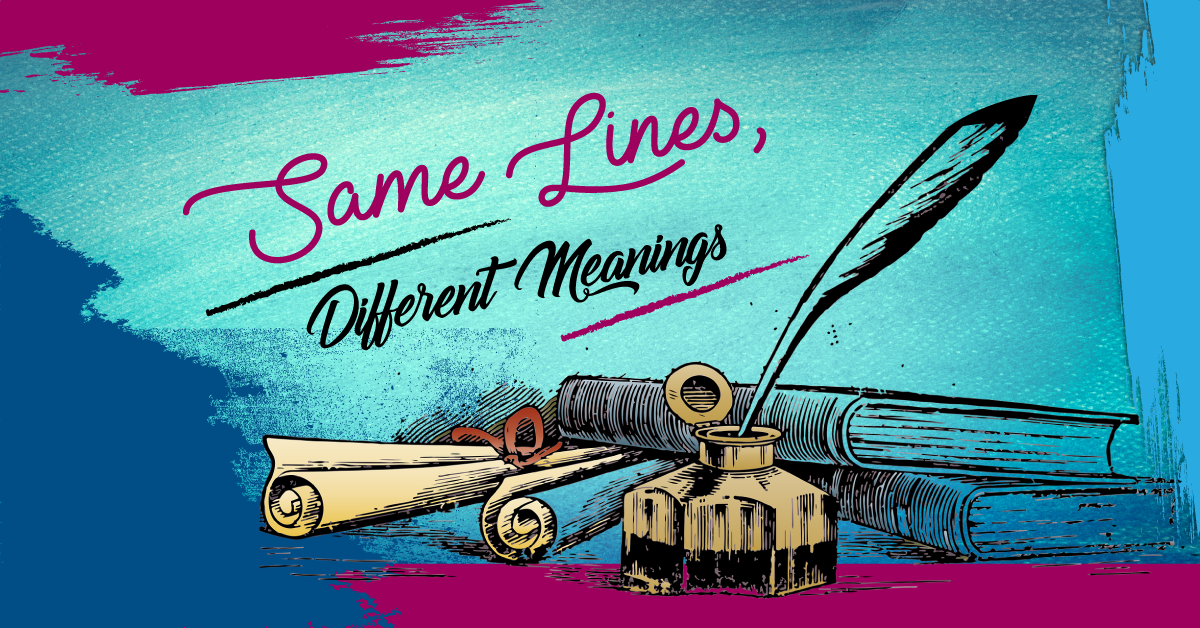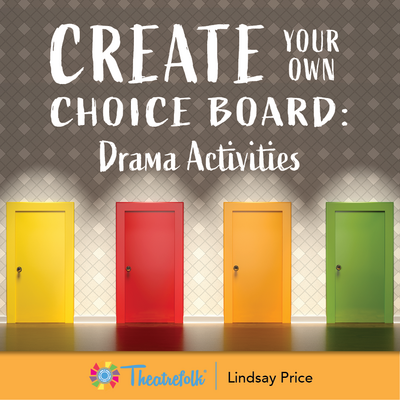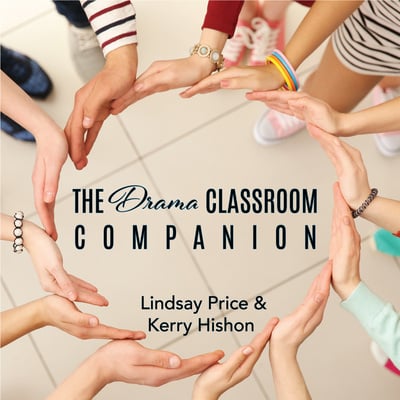Horror Movie 101: Failing Can Be Deadly by Steven Stack is a chilling mix of horror and humor - perfect for student performers and the spooky season! 👻

Exercise: Same Lines, Different Meanings
One of the exciting aspects of rehearsal is experimenting with the text of the script and figuring out what the characters are saying and how they should say it. Each approach to the text will differ from student to student, actor to actor, and director to director – and that’s what makes theatre so interesting!
Here are three fun exercises that allow students to explore different ways of approaching their lines and thinking about the emotions behind them. These exercises can be used in rehearsal as well as in the drama classroom, for students to try different ways of presenting their characters’ lines.
Exercise 1: Emphasis
1. Students will select a partner.
2. Select one line from a play, or use one of the sample lines provided (found in the handout).
3. Count how many words there are in the sentence. For example, the line “Can you help me please?” has five words.
4. Write out the line as many times as there are words in the sentence. From our example, students will write the line out five times.
5. For each sentence, underline a different word.
- Can you help me please?
- Can you help me please?
- Can you help me please?
- Can you help me please?
- Can you help me please?
6. Say the lines out loud one by one, emphasizing the underlined word.
7. How does the emphasis of the different words change the meaning of the line? Note the differences in tone and emotions.
Exercise 2: Emotion
1. With the same partner, students will brainstorm a list of ten different emotions/feelings (for example: happy, sad, surprised, angry, bored, exhausted, annoyed, ecstatic, disgusted, hopeful).
2. Using the same line (“Can you help me please?”), students will say the line out loud ten times, using the ten different emotions they brainstormed.
3. How does the line meaning change when spoken with a different emotion? Does the line still make sense? (If it doesn’t, can you think of a reason or situation where the line would be said with that feeling?) Make note of these thoughts.
Exercise 3: Sliding Scale Variations
1. Using the same line, explore different ranges of emotions. For example:
Loud angry (screaming in rage) versus quiet angry (death glare)
Loud sad (sobbing) versus quiet sad (tears and silence)
Loud happy (screaming in delight) versus quiet happy (fainting away)
2. Try interacting with your partner in a scene, each feeling the same emotion but to the opposite extreme (for example, loud angry versus quiet angry).
3. Try a sliding scale of emotions. If “level 1 anger” is a silent death glare and “level 10 anger” is screaming in rage, what is level 3 on the anger scale? Level 5? How about level 8?
4. Use your senses. What do the emotions look and sound like? For example: “loud angry” might involve yelling and screaming, flailing, and pacing, while “quiet angry” might involve death glares, stiff posture, and clenched fists.
5. How do these different approaches to the text affect the meaning of the lines, as well as your performance? Reflect on your explorations.
Distance Learning Adaptation
All three of these exercises can be practiced and performed using video conferencing programs. The focus will be on rotating volunteer performers (rather than pairing up) and having the rest of the group observe and analyze the performances. Decide whether you wish your students to report their observations verbally in a class discussion, or if you want your students to submit written observations.
Exercise 1: Emphasis
Have one student say the selected line out loud as many times as there are words in the sentence, emphasizing a different word each time.
Observe:
- How does the emphasis of the different words change the meaning of the line?
- Which emphasized word makes the most effective line? Why?
- If the selected line is from a play, compare the line out of context (by itself) to the line when it’s in the context of the scene. Does the same emphasized word work? Why or why not?
- If the selected line is not from a play, invent a line to come before and after the line. Does the same emphasized word work? Why or why not?
Exercise 2: Emotion
As a group, brainstorm ten different emotions/feelings. Have one student say the selected line out loud ten times, using the ten different emotions that were brainstormed.
Observe:
- How does the line meaning change when spoken with a different emotion? Does the line still make sense?
- If the line does not make sense, think of a reason or situation where the line would be said with that feeling.
Exercise 3: Sliding Scale Variations
Using the selected line, have students explore different ranges of emotions.
First, choose two students to try two wide ranges of emotions: loud angry versus quiet angry, loud sad versus quiet sad, loud happy versus quiet happy.
Second, choose five students to try ascending the range of emotions: the first student starts with “level 1 anger” and the last student will finish with “level 10 anger.” The three middle students need to figure out how to increase their levels of emotion without going too big or too small.
Then, choose five students to try descending the range of emotions, from level 10 to level 1.
Observe:
- How does the level set by the first student affect the rest of the students when ascending or descending the emotions?
- When analyzing a script, how do you determine how big or small your emotions need to be? What factors affect your choices?
- What gestures, postures, and facial expressions can help demonstrate the emotion you are trying to portray?
- How do these different approaches to the text affect the meaning of the lines?
Overall Observations:
How does these exercises help you to become a better actor?
How can you use these exercises in rehearsal for a show?
How do strong emotional choices by actors make a scene or show more interesting to watch?
Related Articles
Create Your Own Choice Board: Drama Activities
by Lindsay Price
Choice boards give students the opportunity to choose how they want to learn a particular subject. Create Your Own Choice Boards: Drama Activities can help encourage your students' independence by allowing them to take an active role in their learning.
Distance Learning
by Christian Kiley
A play about trying to survive and thrive in a virtual classroom.
The Drama Classroom Companion
by Lindsay Price & Kerry Hishon
The Drama Classroom Companion is filled with articles and exercises to build the skills needed for theatrical performance as well as real world skills like creative thinking, critical thinking, collaboration, and communication.
The Rehearsal Companion
by Kerry Hishon
You’ve chosen the play, paid the royalties, done the script analysis, held your auditions, and cast the show. Tomorrow is the first rehearsal. Are you ready? Really ready? The Rehearsal Companion can help!






